Domaine La Ligière (Biodynamic) – Southern Rhône
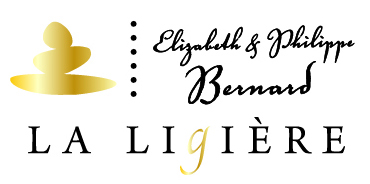
Overview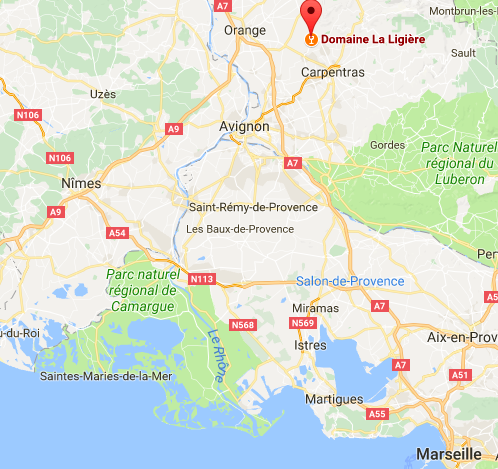
Situated in Beaumes de Venise, Domaine La Ligière is a biodynamic and organic vineyard which consists of 60 hectares of vines, 30 hectares of which are planted in AOC Vacqueyras. For 5 generations, the Bernard family cultivated the land for grape vines and other agricultural products, but it wasn’t until 2008 when Philippe Bernard and his wife Elisabeth Serra started producing wine from their own grapes. The vineyard is planted with Grenache, Syrah, and Mourvèdre vines that are about 50 years of age on average (and up to 75 years on the oldest plot). Domaine La Ligière has been committed to cultivating their vines without the use of fertilizer, weed killer, or any chemical treatment whatsoever for over 10 years. The soil is plowed regularly and fertilized with organic compost in the fall, and the harvest is protected only with the use of natural products such as sulfur, copper, plant infusions (nettle, horsetail, wicker, etc), and biodynamic preparations.
The Vacqueyras Terroir
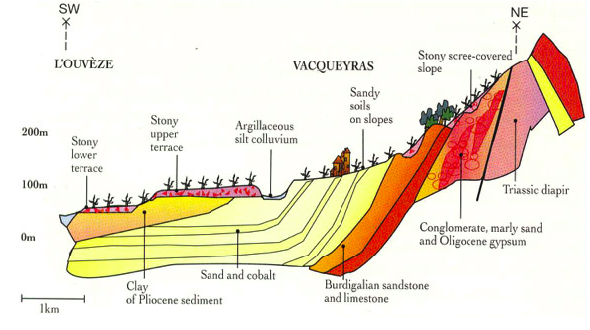
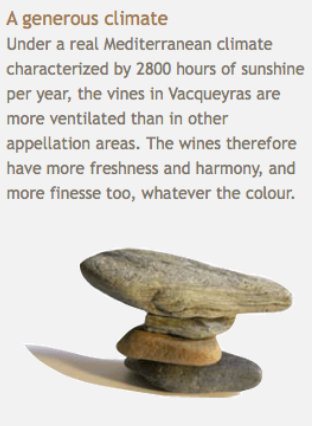 A particular composition of vineyard plots…
A particular composition of vineyard plots…
These plots were very precisely defined by the INAO, the “Institut des Appellations et de la Qualité” (the French appellations and quality institute), in 1990 when Vacqueyras was promoted to the rank of “Cru”. This “terroir” of 1,390 hectares is made up of numerous plots, often of small size, spread over the two districts of Vacqueyras and Sarrians and laid out in terraces.
The wines fully express the identity of the Vacqueyras “appellation”, The Strength and The Balance. Anyone, even non professionals, tasting the wine will always pick up these two complementary traits which are behind the perfect result. Powerful yet finely woven tannins, a developed spicy nose, and always fresh on the palate with a gentle finish.
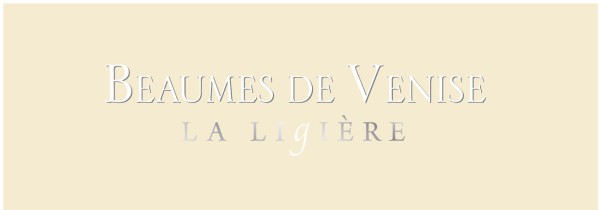
Beaumes de Venise Rouge
Varietal Composition: 60% Grenache (40 years old), 40% Syrah (40 years old)
Soil: Sandy-clay and limestone
Average Yield: 35 hl/ha
Harvest: Manual harvest; grapes are completely destemmed
Vinification: Fermentation using natural yeasts. Maceration for 4-5 weeks. No filtration or fining. Contains sulfites.
Annual Production: 7,000 bottles
Tasting Notes: Situated at the foot of the Dentelles de Montmirail, the terroir of Beaumes de Venise gives complexity and freshness to this wine, along with aromas of dark fruit and good structure. Between the Cotes du Rhone and the Vacqueyras, this Beaumes de Venise has found a beautiful balance.
Food Pairings: This is the perfect accompaniment to red meat, duck, or rabbit dishes.
Alcohol Content: 14%
Serving Temperature: 18-20°C
Cellaring Potential: 8-10 years
2016 Reviews: “The concentrated, cherry-berry-scented 2016 Beaumes de Venise Les Garennes…remains a fine effort, graced with delicate herbal and floral shadings. Full-bodied and rich, it’s supple on the mid-palate, then turns drying and tannic on the finish.”-91pts, Wine Advocate
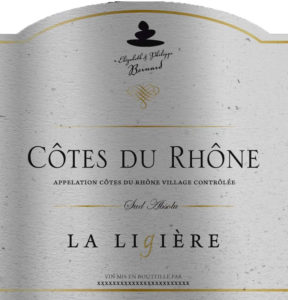
Cotes du Rhone Rouge Sud Absolu
Varietal Composition: 70% Grenache (30 year old vines), 30% Syrah (30 year old vines)
Soil: Calcareous sands
Average Yield: 50 hl/ha
Harvest: Manual harvest; grapes are completely destemmed
Vinification: Fermentation using natural yeasts. Maceration for 4-5 weeks. No filtration or fining. Contains sulfites.
Annual Production: 50,000 bottles
Tasting Notes: Satin smooth texture, spicily fruity wine, which has a complex range of berry flavors.
Food Pairings: Excellent when paired with duck or goose dishes
Cellaring Potential: 3-5 years
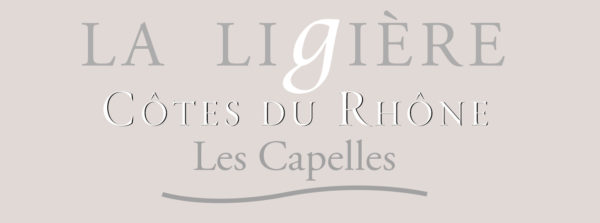
Côtes du Rhône Les Capelles
Varietal Composition: 70% Grenache (30 years old), 20% Syrah (20 years old), 10% Mourvèdre (30 years old)
Soil: Sandy-clay and limestone
Average Yield: 45 hl/ha
Harvest: Manual harvest; grapes are completely destemmed
Vinification: Fermentation using natural yeasts. Maceration for 4-5 weeks. No filtration or fining. Contains sulfites.
Annual Production: 10,000 bottles
Tasting Notes: Deep violet color. The nose reveals notes of fresh fruit, currant, blueberry, and licorice. On the palate, it is crisp, fleshy, fresh, with hints of red fruit and supple tannins.
Food Pairings: Pairs well with charcuterie or rack of lamb
Alcohol Content: 13.5%
Serving Temperature: 18-20°C
Cellaring Potential: 5-7 years
2015 Reviews: “…richer and darker, with ample weight on the palate, rich black-cherry fruit and a velvety but cheerful mouthfeel.” – 91pts, Wine Advocate

Vacqueyras Classique
Varietal Composition: 70% Grenache (50 year old vines), 20% Syrah (30 year old vines) and 10% Mourvèdre (30 year old vines)
Soil: Clay-limestone (garrigues)
Average Yield: 35 hl/ha
Harvest: Manual harvest with sorting; grapes are completely destemmed
Vinification: Fermentation using natural yeasts. Maceration for 4-5 weeks. No filtration or fining. Contains sulfites.
Tasting Notes: Cherry red color with violet reflections. The bouquet is rich and complex, with aromas of red fruit, blackberry, coffee, and licorice. On the palate, it is both supple and fleshy, fresh and balanced. The finish is long with notes of cherry and hints of tight tannins.
Annual Production: 20,000 bottles
Alcohol Content: 14.5%
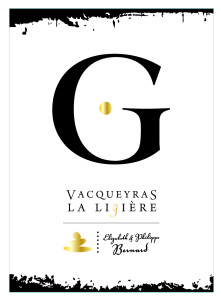
Vacqueyras Cuvée Point G
Varietal Composition: 100% Grenache (75 year old vines and older)
Soil: Clay-limestone (garrigues)
Average Yield: 26 hl/ha
Harvest: Manual harvest with sorting; no destemming of grapes
Vinification: Fermentation using natural yeasts. Maceration for 4-5 weeks. Punching over-no pump used. No filtration or fining. Aging in barrels of 3 wines for 5 months.
Tasting Notes: Garnet color. Notes of dark fruit, toasted almonds, and coffee. Beautiful expression of the terroir and the older vines from which this is produced.
Food Pairings: The perfect companion for forest fowl or a filet of beef in sauce.
Alcohol Content: 14.5%
Serving Temperature: Serve at 18°C
Cellaring Potential: 7-10 years or longer
2015 Reviews:
“Lively, spice-accented raspberry liqueur and floral aromas pick up a smoky mineral nuance with aeration. Juicy red fruit and lavender pastille flavors show very good definition and a sneaky cola quality on the back half. Closes supple, sweet and very long, with resonating floral character and gentle tannic grip.”-91pts, Vinous
“Made from 100% Grenache sourced from vines averaging 75 years in age, this is a richly textured yet vibrant biodynamic wine. Black raspberry and strawberry preserve flavors are concentrated on the palate, accented by hits of crushed violet and earth. The finish is long, marked by very fine but persistent tannins.”–91pts, Wine Enthusiast
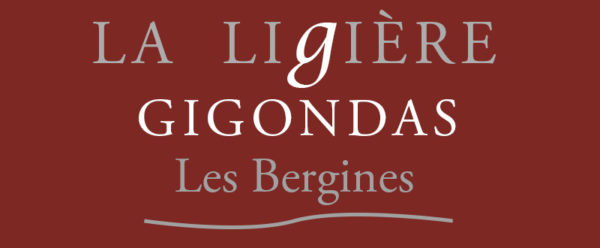
Gigondas Les Bergines
Varietal Composition: 70% Grenache (50 year old vines) and 30% Mourvèdre (30 year old vines)
Soil: Sandy-clay & limestone
Average Yield: 36 hl/ha
Harvest: Manual harvest; grapes are not destemmed
Vinification: Fermentation using natural yeasts. Maceration for 4-5 weeks. No filtration or fining. Contains sulfites.
Aging: 30% aged in barrels for 6 months
Annual Production: 2,000 bottles
Tasting Notes: Situated on a soil of clay-limestone, the Grenache and Mourvèdre grapes lend finesse, freshness, and structure to this wine, complemented by notes of red fruit and spice.
Food Pairings: The Gigondas goes well with wild game and other meats prepared rare to medium-rare
Alcohol Content: 15%
Serving Temperature: 18-20°C
Cellaring Potential: 5-10 years
2016 Reviews: “Vivid magenta. Energetic red fruit, floral and spice qualities on the incisive nose. Juicy and sharply focused on the palate, offering subtly sweet raspberry and cherry flavors that steadily deepen on the back half. Shows very good energy and spicy cut on a long, smooth finish framed by gentle, even tannins.” – 91pts, Vinous
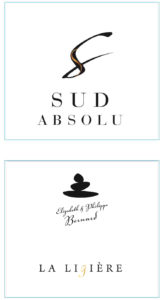
Muscat Sec Sud Absolu
Soil: Sandy clay
Grape Varieties: 100% Muscat Petit Grain
Yield: 70 hl/ha
Alcohol: 13%
Harvest: Manually done, followed by sorting.
Vinification: Direct pressing, fermentation with indigenous yeasts at a low temperature of 14°C. Malolactic fermentation not carried out.
Residual Sugar: < 3 gr/l
Tasting Notes: Beautiful, pale yellow color with golden reflections. The nose is intense, with exotic fruit notes such as passion fruit, combined with floral aromas. The palate is velvety, fleshy, and fruity with good acidity. Fresh on the finish with zesty notes of citrus.
Food Pairings: This wine pairs beautifully with asparagus, poultry, or as an aperitif with tapas.
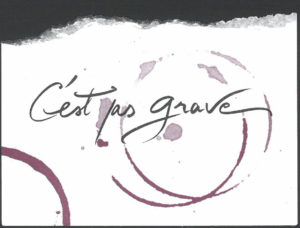
C'est Pas Grave!
Soil: Limestone, sandy clay
Grape Varieties: 60% Syrah, 40% Merlot, Caladoc, Marselan, Grenache, Cabernet Sauvignon, Mourvèdre, Carignan
Yield: 60 hl / ha
Alcohol: 13.5 % Vol
Vinification: Destemmed grapes, fermentation at cool temperatures and maceration for a maximum of 15 days.
Aging: In concrete vats, sterile filtration and bottling under inert gas. No sulfites.
Tasting Notes: Intense plum color. The nose reveals a lovely bouquet of well-ripened red and black fruits. Balanced, fresh, and intense on the palate, with light tannins on the finish.
Food Pairings: Pairs well with charcuterie, red meats, and grilled veggies.
Serving Suggestion: 18-20°C
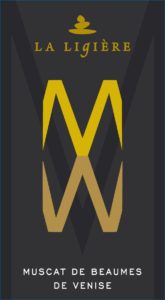
Muscat de Beaumes de Venise Chante Coucou
Soil: Clay limestone
Grape Variety: 100% Muscat Blanc À Petits Grains
Harvest: Manual
Vinification: Fermented at 14 degrees with indigenous yeasts. Malolactic is withheld.
Average Yield: 20 hl/ha
Alcohol: 15.5%
Residual Sugar: 100 g/l
Tasting Notes: Complex aromas of rose, white flowers, white fruits such a peach and pear, and passion fruit. Fresh and balanced, nice combination of sugar, acidity, and alcohol to make of this wine a real dessert wine.
Food Pairing: Foie gras, fruit-based desserts, macaroons, etc.
Serving Temperature: 10-12°C
Domaine Lou Frejau (Organic) – Southern Rhône

The Estate
Situated near the famous Mont Ventoux, and close to the fabulous ancient city of Orange, lies the estate of Lou Frejau.
In 1982, Serge Chastan, a traditional man of the earth, founded Domaine Lou Fréjau (pronounced Lou Freyjao), which means “the round pebble.” This name is drawn from the songs of Provence and inspired by the polished stones that riddle the soil of the vineyard.
Chastan’s wife, Christiane, joined him in 2003, and together they manage the wine making of the estate using traditional methods and their expansive knowledge of oenology, working with total respect of the region and environment. Since 2010, Domaine Lou Fréjau has been an organic estate.
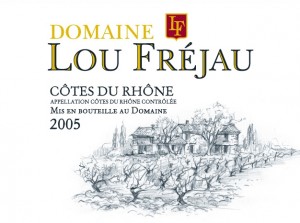
Côtes du Rhône Rouge
*Organic*
The Vines: 89% Grenanche, 8% Cinsault, 3% Syrah
The Soil: Sandy soil
Vinification: The vinification consists of an immediate pressing, vinification at low tempreature (17° – 18°). In the cellar, the wine is poured into huge oak casks (30-50 hl), after which it is left to rest. At this point, the wine will mature, be refined, and bottled soon thereafter.
Tasting Notes: Powerful nose with scents of jams and berries with hints of brandy, leather, and spice. On the palate, this wine is flexible with generous flavors and a thin, discreet, and dry finish. Pairs well with sausages, black pudding, terrine, and pâté.
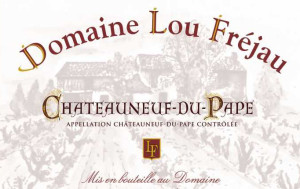
Chateauneuf-du-Pape Rouge
*Organic*
The Vines: The Chateauneuf-du-Pape Rouge is made up of 8 grape varietals from the appellation: Grenache, Mourvèdre, Syrah, Vaccarèse, Cinsault, Counoise, Terret, and Muscardin.
The Soil: Clay and limestone covered with pebbles
Vinification: The vinification is a traditional long fermentation lasting about 3 weeks. In the cellar, it is poured in huge oak casks (30-50 hl) where the liquid enjoys a moment of rest. It will mature for about 12 months on average, depending on the vintage.
Tasting Notes: Crimson with purple hues, bright and intense. Complex floral and fruity nose supplemented by spicy notes, garrigue, and mineral. It has a powerful and elegant framework, but remains generous and round in the mouth with beautiful aromas of red and black fruit. The finish reveals all its qualities. Very good aging potential.
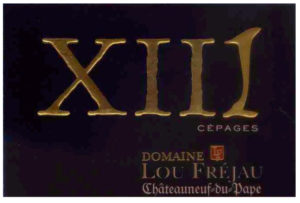
Chateauneuf-du-Pape Cuvée XIII
*Organic*
Soil: Clay limestone with round pebbles
Harvest: Manual
Vinification: Long fermentation lasting about 3 weeks, first portion of aging takes place in oak barrels (50hl) for a few months, followed by 3 years in casks (400L) right up until bottling. The varietal blend is already decided in the plots, so that the complement of flavors is optimized during aging.
Grape Varietals: The 13 grape varieties of the Châteauneuf-du-Pape appellation are: Grenache Blanche, Clairette, Bourboulenc, Roussane, Picardan for white grapes, Grenache Noir, Mourvèdre, Syrah, Cinsault, Vaccarèse, Counoise, Muscardin, and Terret for red grape varieties.
Tasting Notes: Very deep and brilliant reddish purple color. The nose is complex with notes of red fruit such as raspberries, blackberries, and cherries; after decanting, notes of toasted vanilla bean, cocoa, and tobacco arise. Honed by powerful tannins, it remains very well structured with the feel and finesse of the white grape varieties. The mineral element comes back on the finish. Intense aromatic persistence, round in the mouth and very generous; this wine is very well balanced. The finish reveals all its qualities …..this is a wine with a very high aging potential.
2012 Reviews: “Inky ruby. Powerful, spice-accented aromas of cherry compote, blueberry, licorice and minerals, with a strong overlay of candied flowers. Broad-shouldered but lively on the palate, offering sweet dark berry flavors complicated by exotic notes of candied flowers and fruitcake. The mineral element comes back on the youthfully tannic finish, which is broad, sweet and focused.”–92pts, Vinous
Jeanne Gaillard – Northern Rhône
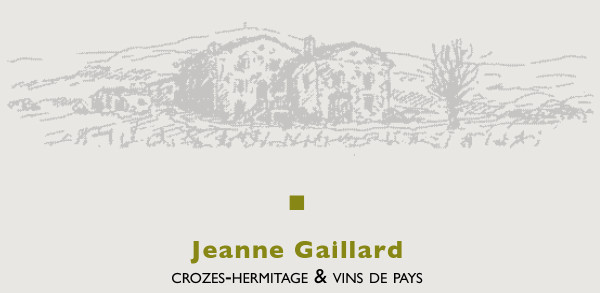
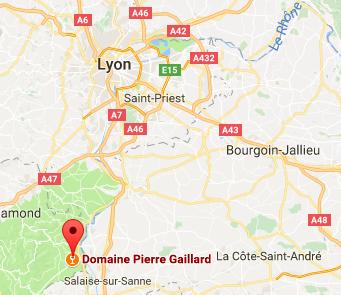
Overview: Jeanne Gaillard, daughter of winemaker Pierre Gaillard, was forcibly introduced to the world of wine when she was a child. Jeanne had gotten caught for some mischevious act, and as punishment, was made to go work in the family vineyard. Her experience that day triggered a lifelong passion for wine!
Years later, she would end up studying sales and viticulture in Beaune, and would have internships at wineries in France and abroad. She was first employed by an estate in Burgundy followed by a winery in California.
In 2008, when she was 24 years old, she acquired 5 hectares in IGP Crozes-Hermitage and 8 hectares in IGP Collines Rhodaniennes, and has been managing them ever since.
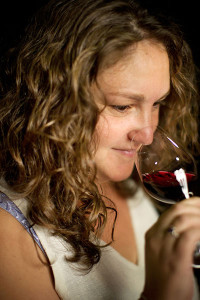 Location: Jeanne Gaillard Vineyard is spread out between 3 administrative zones–Rhone, Loire, Drome–and 3 districts–Marsaz, Malleval and Ternay
Location: Jeanne Gaillard Vineyard is spread out between 3 administrative zones–Rhone, Loire, Drome–and 3 districts–Marsaz, Malleval and Ternay
Surface Area: 13 hectares
Soils: Smooth pebbles, clay, fine sand composed of detrital granite
Grape Varietals:
-Red : Syrah, Merlot
-White: Viognier, Roussanne, Marsanne, Chardonnay, Muscat
Annual Yield: 60,000 bottles
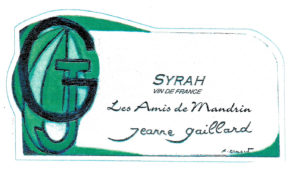
Syrah Les Amis De Mandrin
Overview: This wine comes from several plots of vines with different characteristics between the Drome, the Ardèche, and the Loire. These 3 terroirs are composed of rolled pebbles and granite sands.
Grape Variety: 100% Syrah
Viticulture: The vines are mainly worked manually, but when necessary, machines are used.
Harvest: The grapes are harvested part mechanically and part manually, especially for those vines that are less accessible. A successive sorting on the vine is carried out if necessary.
Vinification: Once the grapes reach the cellar, the bunches are completely destemmed and then vinification begins with a pre-fermentation cold maceration. Fermentation is conducted at a temperature of about 25°C, followed by a post-fermentation maceration at around 30°C.
Aging: 12 months in wooden vats.
Cellaring: 3-5 months
Tasting Notes: Aromas of juicy, ripe dark fruits such as blackberries and black cherries in the bouquet and on the palate, supplemented by notes of smoke and spice.
Food Pairings: Charcuterie, red meats.
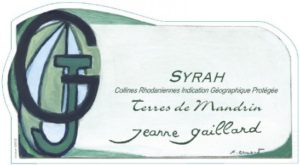
Syrah Terres de Mandrin I.G.P. Collines Rhodaniennes
Terroir: This IGP Syrah comes from several plots with different characteristics. In the Drôme, the scree (slope covered with small loose stones) of Vercors was eroded by the Isère and Drôme rivers, creating a soil of rolled pebbles mixed with sand. On the high plateaus of Ardèche and the Loire, eroded granite produces soft sands with good drainage. The climate is temperate with regular, light rain.
Communes: Marsaz, Colombier-le-Vieux, Charnas, Malleval
Production Area: 10 hectares
Soil: Rolled pebbles and granite sands
Grape Variety: 100% Syrah
Average Age of the Vines: 20+ years old
Training Method: Cord on wire
Average Yield: 55 hl/ha
Harvest: Mechanically and manually done at full maturity of the grapes. Sorting on the vine if necessary.
Vinification: Total destemming. Cold pre-fermentation maceration, and post-fermentation at 30°C. Fermentation at 25°C.
Maturation: 12 months is wooden barrels
Tasting Notes: Named for the French Robin Hood known as Louis Mandrin, and grown nearby the northern Rhone Valley appellations, this IGP expresses the fruitiness of young wines, all the while preserving the typical character of wines from this region. This wine benefits from a bit less extraction than the appellation wines nearby, but it still expresses the fresh qualities and fleshy fruitiness associated with the Syrah grape variety. Superb, with precision and elegance, a gourmet concentration highlights this Syrah’s spicy and smoky notes. Pleasurable on the palate with an acidic finish, full of freshness and red fruit.
Food Pairings: Pairs especially well with steak tartare.
Cellaring: To be consumed within 5 years of vintage
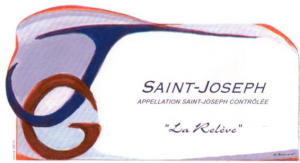
Saint-Joseph La Relève
Surface Area: 1 hectare
Districts: Chavanay and Malleval (Loire)
Grape Varietal: 100% Syrah
Soils: Granite
Yield: 40 hl/ha
Average Age of Vines: 30 years old; the grapes come from three different parcels of vines. Traditionally grown, these vines have been meticulously cared for and are now in very good condition.
Vinification: Hand picked harvest. Cold maceration prior to fermentation for 4 to 5 days. Alcoholic fermentation at 30°C. Maceration after fermentation at 35°C. Malolactic fermentation in barrels. Designed for aging, this wine was highly extracted, thereby revealing the terroir’s rich qualities and mineral characteristics.
Maturation: Aging takes place in a combination of new oak barrels and barrels used once or twice before. Gentle maturing with elegant oak, thereby respecting the wine’s true character.
2017 Reviews: “Youthful purple. Ripe dark berry, violet and olive aromas are complemented by a smoky mineral nuance and a musky pipe tobacco note. Sweet and seamless in texture, offering lush blackberry and cherry liqueur flavors and a building floral nuance. In a distinctly ample style, which is in keeping with the vintage. Round, even tannins form steadily on a long, smoke-tinged finish that strongly repeats the dark fruit note.” – 91pts, Vinous
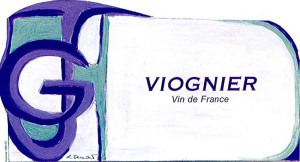
Viognier
Surface Area: 0.4 hectares
Districts: Slopes facing south-west in Ternay (Rhône) and the plains of Marsaz (Drôme)
Grape Varietals: 100% Viognier
Soils: Fine sand of detrital granite; the acid soil is made up of big round pebbles that absorb heat, thereby contributing to the good maturity of the grapes
Vinification: Partly handpicked and partly machine harvested. Sorting of the healthy and the well-ripened grapes. Alcoholic fermantation in barrels with temperature control between 15 and 18°C. Malolactic fermentation in barrels. The grapes are vinified using the same techniques as appellation wines: the must ferments in barrels at a low temperature (between 16°C minimum and 18 °C maximum). Any risk of oxidation is avoided to allow the Viognier grapes to fully express themselves.
Maturation: 7 to 8 months in fine oak from Allier and Nevers. 10% new oak. Lee stirring once a week. The lees are conserved during maturing and frequently stirred. This technique develops the natural fleshy and unctuous characteristics of Viognier associated with this terroir.
Tasting Notes: Unctuous, aromatic, and fresh; vivid minerality with a rich aromatic palate of white flowers, peach, and apricot.
Pierre Gaillard – Northern Rhône

The Estate
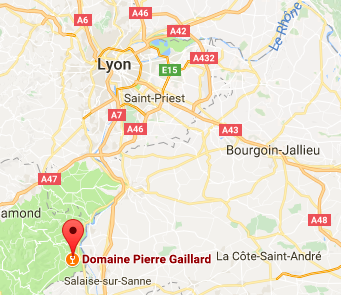
Pierre Gaillard studied Viticulture and Enology in Beaune, and obtained a Graduate Diploma in Winemaking from Montpellier. He bought his first parcel of land in 1981 which was called Clos de Cuminailles, located in Malleval. It was there in the upper part of the medieval town of Malleval that Gaillard established his business. In 2002, he created the estate of Madeloc in Banyuls-sur-Mer, followed by the estate of Cottebrune in Faugères in 2007. Today, Gaillard manages a total of 77 hectares.
The vineyard is located in the northern part of the Rhone Valley, ranging from Cote-Rotie down through to Cornas in the South. Planted on steep slopes, the vines are located on the last foothills of the Massif Central.
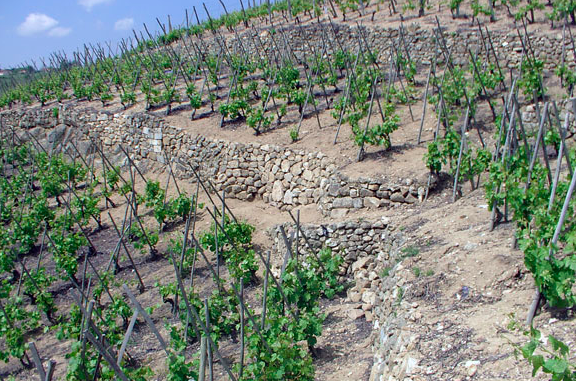
The Vines
Environmental grape growing techniques are implemented on the three estates. The use of organic fertilizers is adjusted to each vineyard’s needs. High plantation density allows the roots to develop and helps to regulate the yield. The soils are tilled to push the roots to grow deep into the soil, letting the vines benefit from the terroir’s natural resources.
Pierre Gaillard tries to make sure that the phenolic maturity of the grapes is achieved around the same time as their alcoholic maturity. The implementation of leaf-fining and green harvesting increases the foliage exposed to the sunlight, thereby directly influencing the wines’ structure and color.
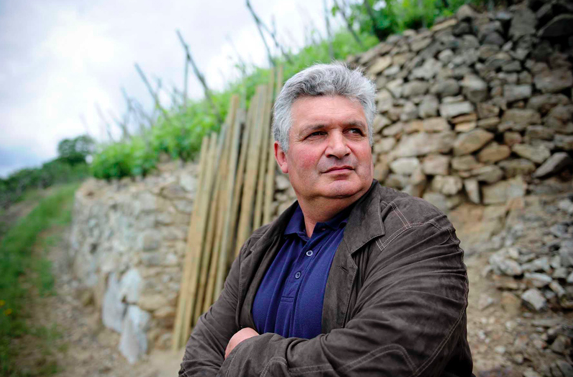 Surface Area
Surface Area
25 hectares
Soils
Decomposing schist (Côte-Rôtie), altered granite (Saint-Joseph, Condrieu and Côtes-du-Rhône). Parent rock on the surface of several parcels. Light, well-drained and warm soil.[/accordion_section]
Grape Varietals
Red: Syrah
Whites: Viognier, Roussanne
Yield
120,000 bottles/year

Asiaticus
Overview: This wine reflects its terroir of slopely schist facing south on the left bank of the Rhône. During the Roman era, this area used to produce the reputed wines of Terres de Viennae.
Terroir: Asiaticus is certainly the most famous person from Vienne (France) during the Gallo-Roman era (1st century AD). He was a senator and then a consul in Rome. He knew the Emperors and participated in the elimination of Caligula and the rise of Claudius. He was a rich patron and owned land within the territory of the city of Vienne. He was the important figure at the time, largely contributing to the notoriety of the Wines of Vienne throughout the Empire and especially in Rome. From a geological point of view, the schist rock bordering the Massif Central to the east was split by a fault when the Alps emerged. The Rhône found its path when this area collapsed, separating a small block of schist on the other bank. The curve of the Rhône near the city of Vienne orients these slopes on the south side by offering them a perfect protection against the cold winds of the north. According to legend, the Romans produced their best wines-Sotanum, Taburnum, and Helicum-from this terroir.
Surface Area: About 1 ha
District: Seyssuel
Varietal Blend: 100% Syrah
Soils: Slope facing southwest, schist
Yield: 30 hl/ha
Vinification: Handpicked harvest, sorting of healthy and well-ripened grapes. Total destemming. Cold fermentation before maceration, alcoholic fermentation at 35°C. Maceration following fermentation at 30°C. Malolactic fermentation in barrels. Cap-punching, pumping over and release techniques help to thoroughly extract the aromas and the tannins associated with the terroir of Seyssuel.
Aging: 18 months in fine oak from Allier and Nevers. Barrels: 50% new with oxygen added every 4 months.
Tasting Notes: The special character of this terroir is well reflected by this wine. It expresses both strength and elegance with good balance. It can be consumed in its youth, but also after 10-15 years of aging.

Condrieu
Terroir: The terroir of Condrieu is ideal for growing Viognier, giving the grapes the perfect environment to express their aromatic potential. It has just the right balance of granite soils and continental climate. The slopes, sometimes steep, and the south-southeast orientation shelters the vines from the cold north winds.
Communes: Chavanay, Malleval, Condrieu
Production Area: 5 hectares
Exposition: South, southeast
Grape Varieties: 100% Viognier
Average Age of the Vines: 20 years old
Soil: Granite sands
Plant Density: 10,000 vines/hectare
Training Method: Guyot trellised on poles
Average Yield: 40 hl/ha
Harvest: The harvest is manually done at peak maturity of the grapes. Sorting on the vine if required.
Vinification: After gentle pressing and clear settling, the musts are vinified in barrels (no new oak). Alcoholic fermentation at about 16-18°C. Malolactic fermentation.
Aging: 9 months in barrels. Batonnage (stirring) on the lees.
Tasting Notes: This elegant and complex wine offers notes of exotic fruits, peach, and acacia. The mouth is ample, round, and subtle, with a long, mineral finish.
Cellaring: To be consumed within 15 years of vintage.

Condrieu L’Octroi
Overview: Fruity, elegant and mineral. This wine is elaborated from a selection of parcels planted a dozen years ago, on the rocky and mineral slopes of the Malleval Gorges.
Terroir: Following the plantation of the vines, the soil was ploughed-with a winch in certain areas. As a result, the roots make their way down to the heart of the terroir and benefit from its mineral characteristics.
Surface Area: 1 ha
Varietal Blend: 100% Viognier
Soils: Fine sand made up of detrital granite facing directly south
Yield: 30 hl/ha
Vinification: Handpicked harvest of well-ripened grapes. Alcoholic fermentation in barrels, controlled temperature between 15 and 18°C. Malolactic fermentation in barrels. Viognier produces rich and aromatic wines. This product is fermented in barrels thereby offering just the right oxygenation to highlight its aromas, all the while avoiding heaviness. The mineral characteristics of the terroir come to the fore, bringing out a sensation of freshness.
Aging: 7 to 8 months in fine grain oak barrels (Allier and Nevers). 5% at the most in new oak. Stirring on lees once a week. The wines are matured and stirred on lees during the entire maturing period in view of preserving their mineral notes, all the while enriching their structure on the palate.
Tasting Notes: Tropical fruit and flower aromas: lychees, white peaches, and violets; lovely minerality and freshness.

Cornas
Terroir: The plot of Cornas is located at the bottom of the hill, on deep soils of highly eroded granite. The climate is continental with Mediterranean influences.
Production Area: 1.5 hectares
Commune: Cornas
Grape Varieties: 100% Syrah
Average Age of the Vines: 70+ years old
Training Method: Trellised goblet on stakes
Plant Density: 10,000 vines/hectare
Soil: Highly weathered granite
Exposition: South and east
Average Yield: 40 hl/ha
Harvest: The harvest is manually done at peak maturity of the grapes. Sorting on the vine if required.
Vinification: The vinification is traditional. The harvest is totally destemmed so that the wine retains all its elegance. Pre-fermentation maceration at cold temperatures, and post-fermentation at 30°C. Fermentation at 30°C. Malolactic fermentation in barrel. The extraction is soft and long so as to obtain silky tannins.
Aging: 18 months in oak barrels (30% new wood)
Tasting Notes: This Syrah is powerful, elegant, rich, and unctuous, with velvety tannins.
Food Pairings: Serve with grilled meats and vegetables.
Cellaring: To be consumed within 10 years of vintage.

Côte-Rôtie
Terroir: The vines are planted on steep hillsides with an exposition to the south/southeast within the municipalities of Ampuis, Tupin, and Semons. The plots located farther north of the appellation are planted on soils composed of brown shale rock rich in iron oxide, whereas farther south the eroded Gneiss soils are more clayey and siliceous.
Production Area: 5 hectares
Grape Varieties: 90% Syrah, 10% Viognier
Average Age of the Vines: 30 years old
Plant Density: 10,000 vines/hectare
Training Method: Trellised goblet on stakes
Average Yield: 40 hl/ha
Harvest: The harvest is manually done at peak maturity of the grapes. Sorting on the vine if required.
Vinification: Total destemming. Pre-fermentation maceration at cold temperatures, and post-fermentation at 30°C. Fermentation at 30°C. Malolactic fermentation in barrel. The extraction is long and gentle so as to obtain silky tannins. Each parcel is vinified and aged separately in order to preserve its unique characteristics. The wine is then blended to obtain a better balance between the power and the elegance of these terroirs.
Aging: 18 months in oak barrels (30% new wood).
Tasting Notes: The Côte-Rôtie is expressive and subtle at the same time. Delicate notes of blackcurrant at the start, with aromas of violet and black pepper. The velvety tannins linger on the palate. The finish has a harmonious, light, airy quality.
Cellaring: This wine drinks well in its youth, and develops delicious complexity with 10-15 years aging.

Côte-Rôtie Esprit de Blonde
Grape Varieties: 90% Syrah, 10% Viognier. The grapes come exclusively from the Côte Blonde
Vinification: Destemmed, 5-7 day pre-fermentation cooling at <10°C, 4-week vinification at up to 35°C, 3 daily cap punchings, pumping-over, part vat emptying/refilling, with maceration at 30°C.
Aging: 50% new wood (down from 100% in early 2010s), 50% 1-year 228-litre oak casks (Allier, Nevers) for 18-20 months, with malo completed in the casks, oxygenated every 4 months, unfiltered.
First Vintage: 2012
Production: Approx. 2,000-2,200 bottles

Côte-Rôtie Rose Pourpre
Terroir: The parcel of Côte Rozier is located in an amphitheater facing south, with many dried stone walls restituting the warmth of the sun. This special situation translates to a particularly hot micro-climate.
Surface Area: 0.8 ha
District: Ampuis (Rhône)
Varietal Blend: 100% Syrah
Soils: Brown schist, rich in iron oxide
Yield: 35 hl/ha
Vinification: Handpicked harvest, sorting of the healthy and well-ripened grapes. Total destemming. Cold maceration before fermentation. Alcoholic fermentation at 35°C. Maceration after fermentation at 30°C. Malolactic fermentation in barrels. Cap punching three times a day, pumping over and release techniques allow for the good extraction of the aromas and the tannins. Placed in barrels before malolactic fermentation, this wine blends gradually with the oak producing pleasant melted aromas.
Aging: 18 months in fine oak from Allier and Nevers. Barrels 50% new with oxygen added every 4 months. After the maturing, the best barrels are selected in view of obtaining the most subtle balance between the strength and the finesse of the terroir of Côte Rozier.
Cellaring Potential: It is best to keep this wine in the cellar for a minimum of 3 years. It can be aged for up to 15 years.

Cotes du Rhone Blanc Les Gendrines
Terroir: The vines are planted on fine granite-laden sandy hillsides, facing east, contrary to the parcels of Condrieu. This cooler exposition allows the berries of Viognier to develop good acidity, joined by richness and maturity brought about by the limited yield.
Surface Area: 1.5 ha
Districts: Chavanay, Malleval (Loire), Limony (Ardèche)
Varietal Blend: 100% Viognier
Soils: Fine soil composed of detrital granite
Vinification: Handpicked harvest, sorting of the healthy and well-ripened grapes. Alcoholic fermentation in barrels, at a controlled temperature between 15-18°C. Malolactic fermentation in barrels. The fermentation in barrels enables the wine to fully express its aromatic potential. The limited use of new oak (a mere 10%) allows the Viognier to fully express its finesse and freshness, brought about by the granite from the northern part of the Rhône Valley.
Aging: 7 to 8 months in fine oak from Allier and Nevers. 5% in new oak. Stirring on lees once a week. The stirring and the use of lees during the entire maturing period preserves the wines mineral characteristics all the while enriching the structure on the palate. This technique makes the wine more unctuous and creates roundness as well as volume.
Tasting Notes: Bright color typical of the variety. Floral nose with aromas of white flesh fruit. The mouth is full and finished with some minerality typical of the terroir. Ready to drink.
Serving Notes: Serve between 10- 12˚C. Pairs well with goat cheeses, pâtés, terrines, white meats, or simply as an aperitif.

Crozes-Hermitage
Terroir: The soil is made up of well-draining rolled pebbles that were deposited by the rivers at the confluence of the Isère and the Rhône. The stones store the heat well and thus promote a beautiful expression of Syrah in the resulting wine.
Production Area: 5 hectares
Communes: Chanos Curson, Veaune, Beaumont, Monteux
Grape Varieties: 100% Syrah
Soil: Rolled pebbles
Average Yield: 45 hl/ha
Training Method: Cordon de Royat trellised on wire
Plant Density: 6,000 vines/hectare
Average Age of Vines: 30 years old
Harvest: Mechanically and manually done at full maturity of the grapes.
Vinification: Total destemming. Pre-fermentation maceration at cold temperatures, and post-fermentation at 30°C. Fermentation at 30°C. Malolactic fermentation in barrel. The extraction is soft and long so as to obtain silky tannins.
Aging: 18 months in oak barrels
Tasting Notes: The nose is refined, with notes of red berries and spices. The palate is vinous, structured, and delicate.
Food Pairing: Goes well with rabbit, chicken thighs, duck, or soft, creamy cheeses like Saint Marcellin.
Cellaring: To be consumed within 5 years of vintage.

Saint-Joseph Blanc
Overview: Intensely fresh, complex and aromatic. Made from Roussanne, cultivated on the upper part of Malleval and of Chavanay
Terroir: Saint-Joseph white wines are traditionally made from a blend of Roussanne et Marsanne. Pierre Gaillard only uses Roussanne, as this variety produces wines with interesting complexity and good rich characteristics. Harvested when fully-ripened from vineyards planted in the granite-laden soils situated north of the appellation, this wine expresses complexity and good mineral features including during hot years.
Surface Area: 2.3 ha
Districts: Chavanay, Malleval (Loire)
Varietal Blend: 100% Roussanne
Soils: Fine sand composed of detrital granite
Yield: 25 hl/ha
Vinification: Handpicked harvest, sorting of healthy and well-ripened grapes. Alcoholic fermentation in barrels. Controlled temperatures (15-18°C). Malolactic fermentation in barrels. The low yield reinforces the richness and the aromatic complexity of the Roussanne grape variety. The wine is protected from oxidation
to avoid heaviness and to bring out the terroir’s natural mineral characteristics.
Aging: 7 to 8 months in fine oak from Allier and Nevers. 5% in new barrels. The wines are matured and stirred on lees once a week during the entire period to preserve their mineral characteristics all the while enriching their structure on the palate.
Cellaring Potential: Can be consumed in its youth, however will also age very well and harmoniously for 5 to 6 years.

Saint-Joseph Rouge
Terroir: This Saint-Joseph comes from the north of the appellation. The granite is very draining and this characteristic is accentuated by the slopes. The continental climate with Mediterranean influence offers scanty but regular rains, limiting the problem of drought on this terroir.
Communes: Chavanay, Malleval, Sarras
Production Area: 10 hectares
Exposition: East, southeast
Grape Varieties: 100% Syrah
Training Method: Cord of royat and Goblet
Average Age of the Vines: 20+ years old
Soil: Granite sands
Plant Density: 6,500 vines/hectare
Average Yield: 40 hl/ha
Harvest: The harvest is manually done at peak maturity of the grapes. Sorting on the vine if required.
Vinification: Total destemming so that the wine retains all its elegance. The extraction is soft and long so as to obtain silky tannins. Pre-fermentation maceration at cold temperatures, and post-fermentation at 30°C. Fermentation at 30°C. Malolactic fermentation in barrel.
Aging: 15 months in oak barrels (no new wood). Regular oxygenation during the aging process so that the fruit will be expressed.
Tasting Notes: The nose is reminiscent of a basket of red fruits, with hints of gingerbread. On the palate, this Saint-Joseph is frank with delicacy and suppleness.
Cellaring: To be consumed within 5 years of vintage.

Saint-Joseph Les Pierres
Overview: Refined and aromatic. Elaborated from the best wines in the cellar, following several selections.
Terroir: Les Pierres is the fruit of a double selection. As of the harvest, all of the terroirs are separated. The best harvests produced at Clos de Cuminaille but also at Côte Belley and Limony are identified and matured in new barrels. As a result, this wine is derived from well-exposed hillsides, composed of granite with fine soil offering good drainage and conditions allowing the Syrah grape variety to fully express its characteristics.
Surface Area: 1.5 ha
Districts: Chavanay, Malleval (Loire), Limony (Ardèche)
Varietal Blend: 100% Syrah
Soils: Altered granite
Yield: 35 hl/ha
Vinification: Annual harvest, selective sorting of healthy and well-ripened grapes. Total destemming. Cold maceration before fermentation, alcoholic fermentation at 35°C. Maceration at 30°C after fermentation. Malolactic fermentation in barrels. Cap punching three times a day, as well as pumping over and release techniques skilfully extracting aromas and tannins. Placed in barrels before the malolactic fermentation, the wine combines well with oak, producing pleasant melted aromas.
Aging: 18 months in fine oak from Allier and Nevers. 100% new oak barrels with racking every three months. In March, when the wine is blended, only 20-25% of the barrels expressing the most aromatic complexity will become Les Pierres. This special elegance will entirely come to the fore after 10 years aging.
Tasting Notes: Savory with silty, polished berries and plum skins–ripe and sweet, this is bright and taut and yet supple and inviting. Balanced, with a crescendo of fruit and then spice.



